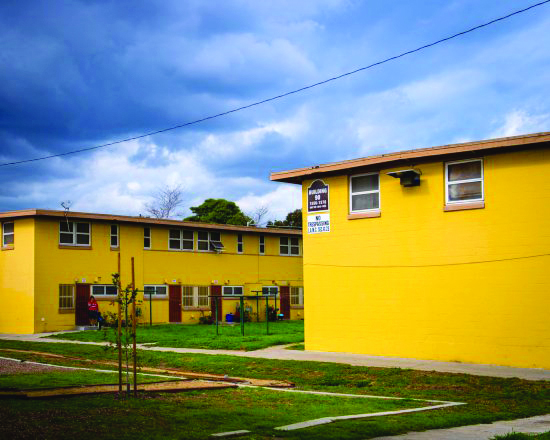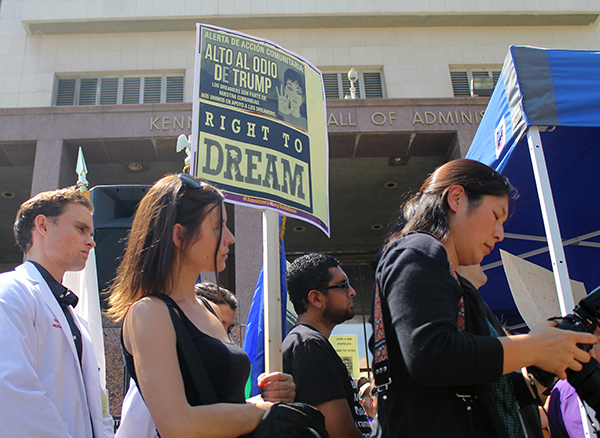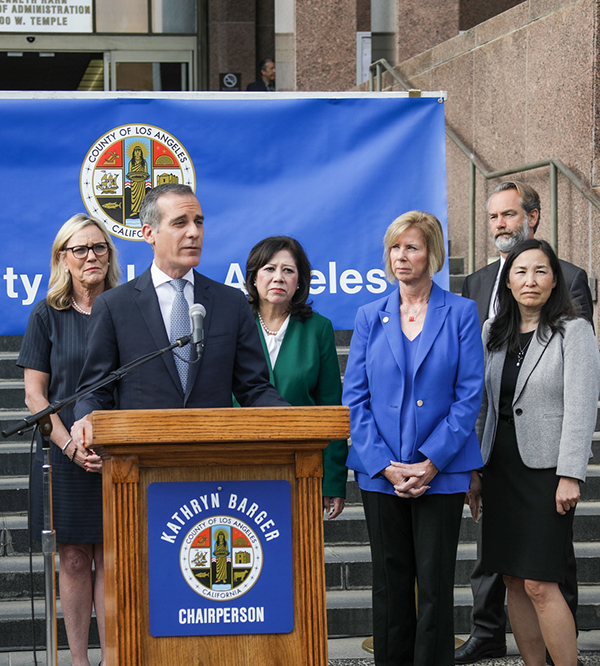By Mayor Eric Garcetti
Contributing Columnist
I often describe Los Angeles as a global crossroads, a place where cultures collide, diverse communities intersect and the world comes to innovate.
Our city is stronger when we are connected to the rest of the world, and when all Angelenos are connected to opportunity and resources –– and to each other.
The COVID-19 pandemic has posed unexpected challenges for everybody. But this crisis has also reminded us of deeper truths just beneath the surface –– realities about life in the 21st century we cannot ignore. Chief among them: the fact that internet connectivity is now a necessity, not a luxury, and that many of our neighbors lack access to this vital tool of economic and educational success.
As we all stay safer at home, internet access is how most students are able to learn in their classrooms. It’s how many Angelenos are able to work and visit their doctor. And it’s become an essential way for people to stay in touch with their loved ones –– to gather virtually for everything from Thanksgiving to birthdays and baby showers.
But the pandemic has laid bare the depths of the digital divide. In Los Angeles, Black and Latino households are only one-third as likely as white households to have internet, with older Angelenos four times less likely to be connected. More than 30% of Watts households do not have a broadband subscription.
We’re working hard to close that divide and bring reliable internet access to all Angelenos.
In 2018, we became America’s first 5G city, growing our capacity at an unprecedented rate, from 15 small cells in 2014 to nearly 2,000 today.
That means, in practical terms, there are no “dead zones” in Los Angeles –– connectivity is possible anywhere in our city and you have the choice of at least two providers.
We also want to make sure that it’s affordable to get online, which is why we’re delivering six months of free internet access to residents in four public housing communities across Los Angeles.
This is the result of a partnership between my Office of Budget and Innovation, the Housing Authority of the City of Los Angeles (HACLA), Starry Internet and Microsoft. It will serve nearly 3,600 units of housing and 9,000 residents. And, after the first six months, service will continue for just $15 a month.
And we are leveraging our partnerships to ensure that our seniors, who are especially vulnerable during this pandemic, stay connected with their loved ones and health care providers.
Working with HACLA, our Department of Aging and Microsoft, we’ll provide tablets at housing complexes, as well as training from our partners at the American Association for Retired People so older Angelenos know how to use technology to do everything from chat with their grandchildren to check in with their doctor.
This is about ensuring that seniors, children, and some of our most vulnerable families no longer find themselves on the wrong side of the digital divide –– and making low-cost, high-quality broadband options more widely available.
The digital sphere isn’t limited by race, neighborhood, wealth, or zip code; our ability to access it shouldn’t be determined by those factors, either. Indeed, connectivity is about more than the internet. It’s about equity and fairness. It’s about creating new opportunities and opening up new possibilities for discovery. It’s about building and strengthening our bonds to one another.
Now, more than ever, this kind of connection is vital. As your mayor, I am committed to making that connection available to everyone in our City of Angels.
Mayor Eric Garcetti’s “Community Report” column runs monthly in The Wave.













